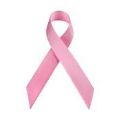Almost one out of nine women is expected to develop breast cancer, the second leading cause of cancer-related death in women.
So far, researchers haven't found any fool-proof way to prevent breast cancer except voluntary mastectomy (surgical removal of the breasts) for women at extremely high risk. Short of taking this drastic step, the best way a woman can protect herself against breast cancer is by practicing early detection methods and by reducing known risk factors. If breast cancer is found and treated early—before it has spread beyond the breast—the five-year survival rate is greater than 95 percent.
Are You at Risk?
Over 200,000 women in the United States are diagnosed with breast cancer each year. Here are the common risk factors associated with the disease:
-
Being female. Breast cancer is most prevalent in women, although men can develop the disease as well. While Caucasian women are more likely to develop breast cancer than African-American females, the death rates are 30 percent higher for African-Americans.
-
Getting your period young. Starting your period before the age of 12 increases your chances of developing breast cancer, possibly due to greater exposure to hormones over the course of a lifetime.
-
Family history. If anyone in your immediate family (mother, sister, or daughter) has had breast cancer, you are also at greater risk. Breast cancer can run in families, but this does not mean you will automatically develop the disease. Genetic testing and counseling is available for women concerned about their risk.
-
Late childbearing or no childbearing. Becoming pregnant for the first time at age 26 or older—or never getting pregnant at all—puts you at risk. In contrast, having multiple children reduces your risk of developing breast cancer, possibly because of protective hormonal changes that occur during pregnancy.
-
Heavy drinking. While the occasional alcoholic drink is okay, consuming more than two drinks per day increases your chances of developing breast cancer. Women who consume two to five drinks each day are about 1-1/2 times more likely to develop breast cancer than women who don’t drink.
-
Smoking, especially at a young age. Studies have suggested that smoking at an early age can increase your risk of breast cancer. A study by the Dankook University College of Medicine in Korea found that the breast cancer-promoting effects of smoking were strongest in young women who had not yet had children. The risk may be lower after childbearing because, by then, breast cells have finished developing and are less vulnerable to carcinogens.
-
Being overweight. General obesity has been associated with increased breast cancer risk in post-menopausal women. But the amount of weight gained in adult life is a greater predictor of breast cancer risk than weight alone, according to a study from Morehead State University in Kentucky. Their researchers found that women who gained more than 60 pounds between age 20 and menopause had a roughly 70 percent higher risk of breast cancer, compared with women who gained fewer than 20 pounds. There was a 4 percent increase in risk for each 11 pounds gained as an adult.
-
Eating a high-fat diet. In the largest study of its kind, researchers from the National Cancer Institute found that women who consumed the most fat—regardless of what type—were 15% more likely to develop breast cancer than women who ate the least fat.
-
Hormone replacement therapy. Studies have shown a strong link between post-menopausal hormone replacement therapy (HRT) and breast cancer. If you need HRT, talk to your doctor to determine your personal risk level.
Protecting Your Pair
These 8 tips may help you cut your breast cancer risk.
-
Check out your breasts. Performing breast self exams (BSE) regularly—once a month—can help with early detection. When breast cancer is detected early, less aggressive treatment is needed and the chance of survival is higher. Ask your doctor to show you how to examine your breasts properly or watch SparkPeople's Breast Self Exam video.
-
Maintain a healthy weight. And if you're overweight, lose it. Keeping your weight in a healthy BMI range can have a protective effect. Why? Because being overweight increases your body's levels of estrogen, a hormone that plays a key role in the development of breast cancer.
-
Get a mammogram. If you're 40 or older, regular mammograms will help detect breast cancer—especially lumps that are too small to detect during a self-exam.
-
Breastfeed your babies. Nursing isn't just good for babies—it benefits mom too! One study by the University of Southern California found that breastfeeding seems to lower the risk of breast cancer, even in women who have their children later in life. As more women choose to delay childbearing until after age 25, breastfeeding should be encouraged to provide protection against the hormones that can contribute to the development of breast cancer.
-
Eat your vegetables (and fruits)! Eating at least seven servings of fruits and vegetables each day will supply your body with cancer-fighting phytochemicals. You'll get the most protection from cruciferous vegetables (broccoli, cabbage, Brussels sprouts and cauliflower), dark leafy greens (collards, kale and spinach), citrus fruits, berries, cherries and pomegranates.
-
Choose the right fats. Today, our diets contain a lot of unhealthy fats—omega-6's (found in sunflower, safflower, corn and cottonseed oils), saturated fats and trans fats—and too few healthy fats (omega-3's from fish and monounsaturated fats in nuts). Reverse the trend! Decrease your consumption of the bad stuff and start eating more heart-healthy fats to protect your breasts.
-
Keep moving! You know exercise is good for you, but did you know it can also reduce your risk of breast cancer? Studies by the Women’s Health Initiative found that women who walked briskly for just 1-1/4 to 2-1/2 hours each week reduced their risk for breast cancer by 18 percent. University of Southern California researchers found that women who exercised more than five hours a week cut their risk of invasive breast cancer by 20 percent and their risk of early stage breast cancer by 31 percent, compared to women who exercised less than 30 minutes a week. When it comes to cancer prevention, experts agree that duration (length of your workouts) and consistency are more important than intensity.
-
Know when to see your doctor. Besides your annual gynecological checkups, visit your doctor immediately if you notice any of the following symptoms in your breasts: a lump, hard knot or thickening tissue; swelling, warmth, redness or darkening; dimpling or puckering of the skin; an itchy, scaly sore or rash on the nipple; a pulling in of your nipple or other area of the breast; sudden nipple discharge; or new pain in one spot that doesn’t go away.
To learn more about breast cancer screening, prevention and treatment, check out our Breast Cancer Video Series.
|







.png)
